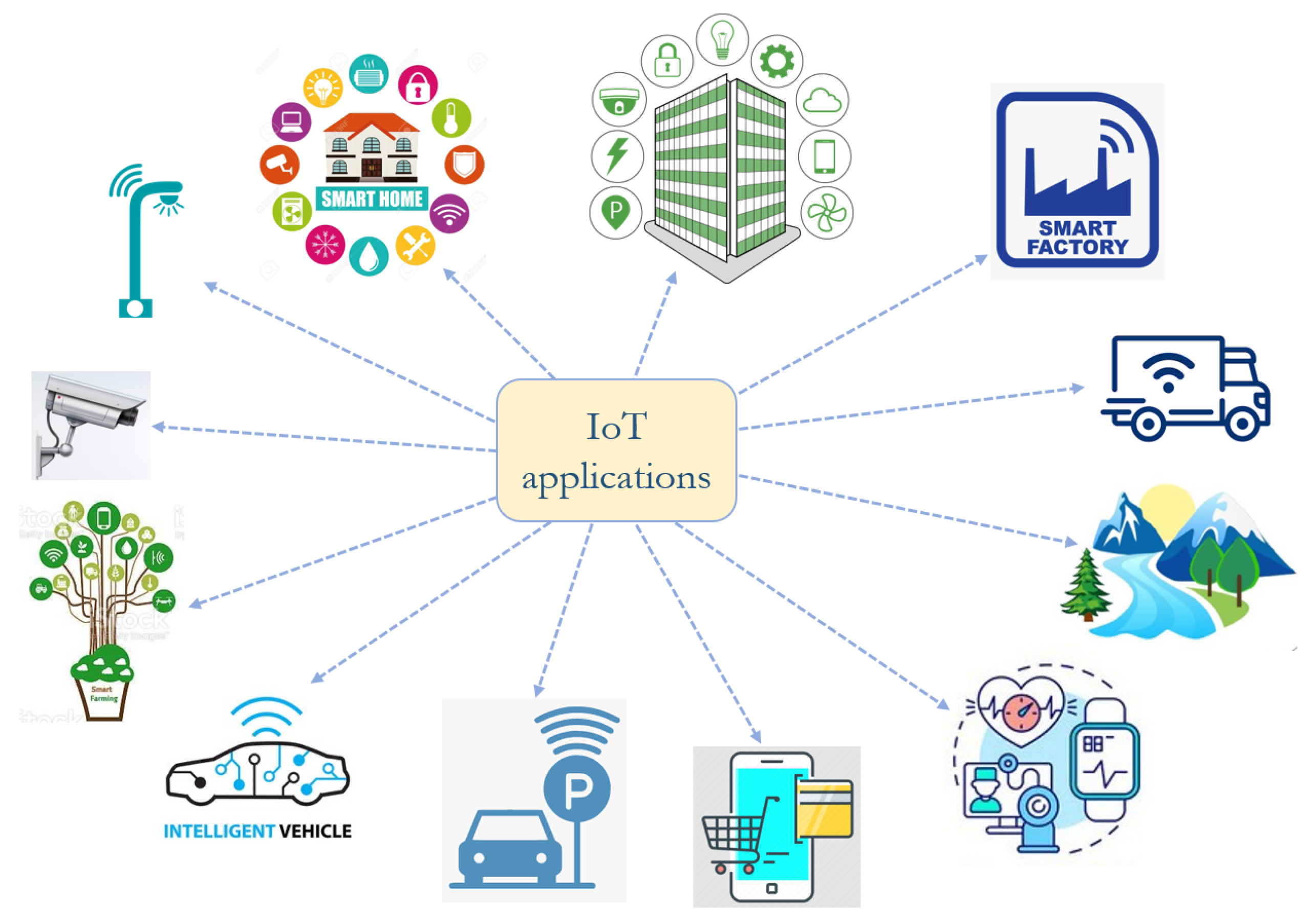Unlocking The Power Of IoT SSH Applications: Real-World Examples You Need To Know
Hey there, tech enthusiasts and IoT geeks! Let's dive right into the heart of the matter. IoT SSH applications examples are transforming the way we interact with connected devices. These aren't just buzzwords; they're real-life solutions that are reshaping industries, homes, and businesses. If you're scratching your head wondering what all this means, don’t worry. We’ll break it down for you step by step, making sure you leave here feeling like an IoT pro. So buckle up and get ready for a ride through the world of IoT SSH applications!
Now, let’s be honest. The Internet of Things (IoT) has been around for a while now, but its integration with SSH (Secure Shell) adds a whole new layer of security and functionality. For those unfamiliar with SSH, it’s like a digital Swiss Army knife that lets you securely access and manage remote devices. Combine this with IoT, and you’ve got a powerhouse duo ready to take on the digital world.
Why should you care? Well, whether you're a tech enthusiast, a business owner, or just someone curious about the future of technology, understanding IoT SSH applications can open doors to endless possibilities. From smart homes to industrial automation, the applications are as diverse as they are impactful. Let’s explore how these applications are changing the game.
Read also:Movierulzcom The Ultimate Guide To Understanding The Controversial Streaming Platform
Table of Contents
- What Are IoT SSH Applications?
- Real-World IoT SSH Applications Examples
- Benefits of IoT SSH Applications
- Industries Using IoT SSH
- Security Considerations in IoT SSH
- Future Trends in IoT SSH
- Common Challenges in IoT SSH Deployment
- Tools and Technologies for IoT SSH
- Expert Advice on IoT SSH Implementation
- Conclusion: Why IoT SSH Matters
What Are IoT SSH Applications?
Alright, let’s start with the basics. IoT SSH applications are basically systems that use the Secure Shell protocol to manage and control IoT devices. Think of SSH as a secure tunnel that allows you to remotely access and configure devices without worrying about hackers peeking in. It’s like having a private conversation in a crowded room.
In the world of IoT, where devices are constantly exchanging data, SSH ensures that this communication remains secure and reliable. This is crucial, especially when dealing with sensitive information like personal data or industrial secrets.
How Does IoT SSH Work?
Here’s a quick breakdown of how IoT SSH applications work:
- Device Connection: IoT devices connect to a central server or gateway.
- Secure Communication: SSH establishes an encrypted channel between the device and the server.
- Remote Management: Users can remotely access and manage devices using SSH commands.
It’s like having a virtual assistant that handles all your device interactions for you, but with a focus on security and efficiency.
Real-World IoT SSH Applications Examples
Now that we’ve covered the basics, let’s dive into some real-world examples of IoT SSH applications. These examples will give you a clearer picture of how this technology is being used across various industries.
Smart Homes
IoT SSH applications are revolutionizing smart homes. Imagine being able to control your thermostat, lighting, and security systems from anywhere in the world. SSH ensures that these interactions remain secure, preventing unauthorized access to your home devices.
Read also:The Power And Efficiency Of Remote Access In Iot Revolutionizing Connectivity
Industrial Automation
In the industrial sector, IoT SSH applications are used for remote monitoring and control of machinery. This reduces downtime and increases efficiency. For example, a factory manager can check the status of a machine and make necessary adjustments without physically being present on-site.
Healthcare
IoT SSH applications are also making waves in the healthcare industry. Remote patient monitoring systems use SSH to securely transmit patient data to healthcare providers. This allows for timely interventions and improved patient care.
Benefits of IoT SSH Applications
Let’s talk about the perks of using IoT SSH applications. There are plenty of advantages that make this technology worth considering:
- Enhanced Security: SSH provides a secure channel for data transmission, protecting sensitive information from cyber threats.
- Remote Access: Users can manage devices from anywhere, making it ideal for businesses with remote operations.
- Improved Efficiency: Automation and real-time monitoring lead to increased productivity and reduced costs.
These benefits make IoT SSH applications a no-brainer for anyone looking to enhance their tech stack.
Industries Using IoT SSH
IoT SSH applications are being adopted across a wide range of industries. Here’s a look at some of the sectors where this technology is making a big impact:
Manufacturing
In manufacturing, IoT SSH applications are used for predictive maintenance and quality control. This helps in identifying potential issues before they become major problems.
Transportation
The transportation industry uses IoT SSH for fleet management and vehicle tracking. This ensures that vehicles are operating efficiently and safely.
Agriculture
Smart farming relies on IoT SSH applications for monitoring soil conditions, weather patterns, and crop health. This leads to better yields and more sustainable farming practices.
Security Considerations in IoT SSH
While IoT SSH applications offer numerous benefits, security is always a top concern. Here are some key considerations to keep in mind:
- Authentication: Ensure that only authorized users have access to your devices.
- Encryption: Use strong encryption protocols to protect data in transit.
- Regular Updates: Keep your systems up to date with the latest security patches.
By addressing these security concerns, you can maximize the benefits of IoT SSH applications while minimizing risks.
Future Trends in IoT SSH
Looking ahead, the future of IoT SSH applications is bright. Here are some trends to watch out for:
- AI Integration: Artificial intelligence will play a bigger role in IoT SSH, enabling more intelligent and autonomous systems.
- Edge Computing: Processing data closer to the source will improve latency and reduce bandwidth usage.
- Quantum Security: As quantum computing becomes more mainstream, we’ll see advancements in quantum-resistant encryption for IoT SSH.
These trends will shape the future of IoT SSH applications, making them even more powerful and versatile.
Common Challenges in IoT SSH Deployment
Of course, no technology is without its challenges. Here are some common issues you might face when deploying IoT SSH applications:
Compatibility
Not all devices are compatible with SSH, which can limit the scope of your deployment.
Scalability
As your network grows, managing large numbers of devices can become complex.
Cost
Implementing IoT SSH solutions can be expensive, especially for small businesses.
Despite these challenges, the benefits often outweigh the drawbacks, making IoT SSH a worthwhile investment.
Tools and Technologies for IoT SSH
There are several tools and technologies available to help you implement IoT SSH applications. Some popular options include:
- OpenSSH: A widely used SSH implementation that’s open-source and highly customizable.
- Putty: A popular SSH client for Windows users.
- Ansible: An automation tool that can be used to manage IoT devices over SSH.
These tools make it easier to deploy and manage IoT SSH applications, even for those with limited technical expertise.
Expert Advice on IoT SSH Implementation
For those looking to implement IoT SSH applications, here’s some expert advice:
- Start Small: Begin with a pilot project to test the waters before scaling up.
- Partner with Experts: Work with experienced professionals who can guide you through the implementation process.
- Focus on Security: Make security a priority from day one to avoid costly breaches down the line.
By following this advice, you can increase your chances of success when implementing IoT SSH applications.
Conclusion: Why IoT SSH Matters
And there you have it, folks! IoT SSH applications are transforming the way we interact with connected devices. From smart homes to industrial automation, the possibilities are endless. By understanding the benefits, challenges, and future trends of IoT SSH, you can make informed decisions about how to incorporate this technology into your life or business.
So, what are you waiting for? Dive into the world of IoT SSH applications and see how they can revolutionize your tech experience. Don’t forget to leave a comment or share this article if you found it helpful. Let’s keep the conversation going!
Article Recommendations


